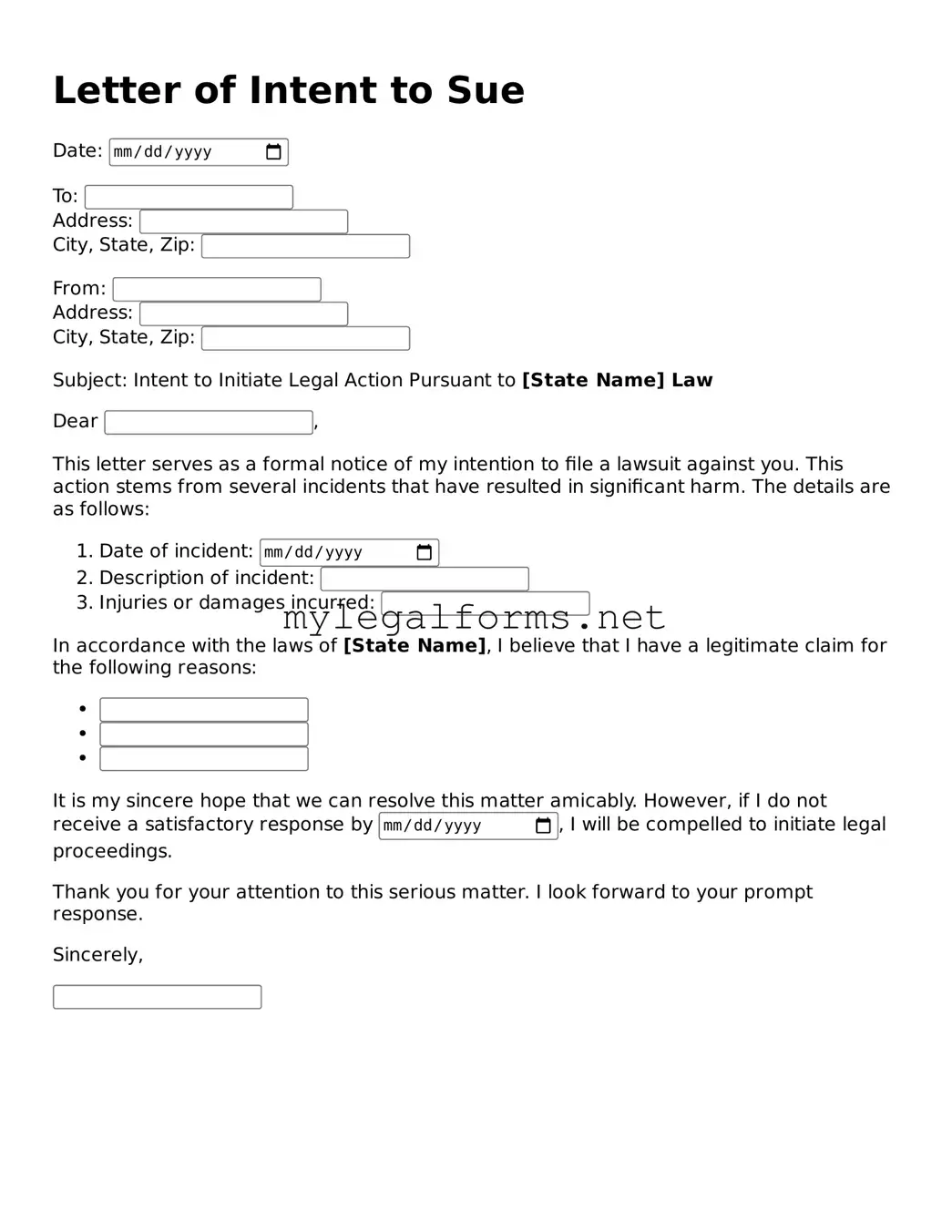Attorney-Approved Letter of Intent to Sue Form
A Letter of Intent to Sue is a formal document that expresses a party's intention to take legal action against another party. This letter serves as a precursor to a lawsuit, allowing the recipient to understand the grievances and potentially resolve the matter before it escalates to court. By outlining the key issues and demands, it encourages dialogue and may lead to a settlement without the need for litigation.
Launch Letter of Intent to Sue Editor
